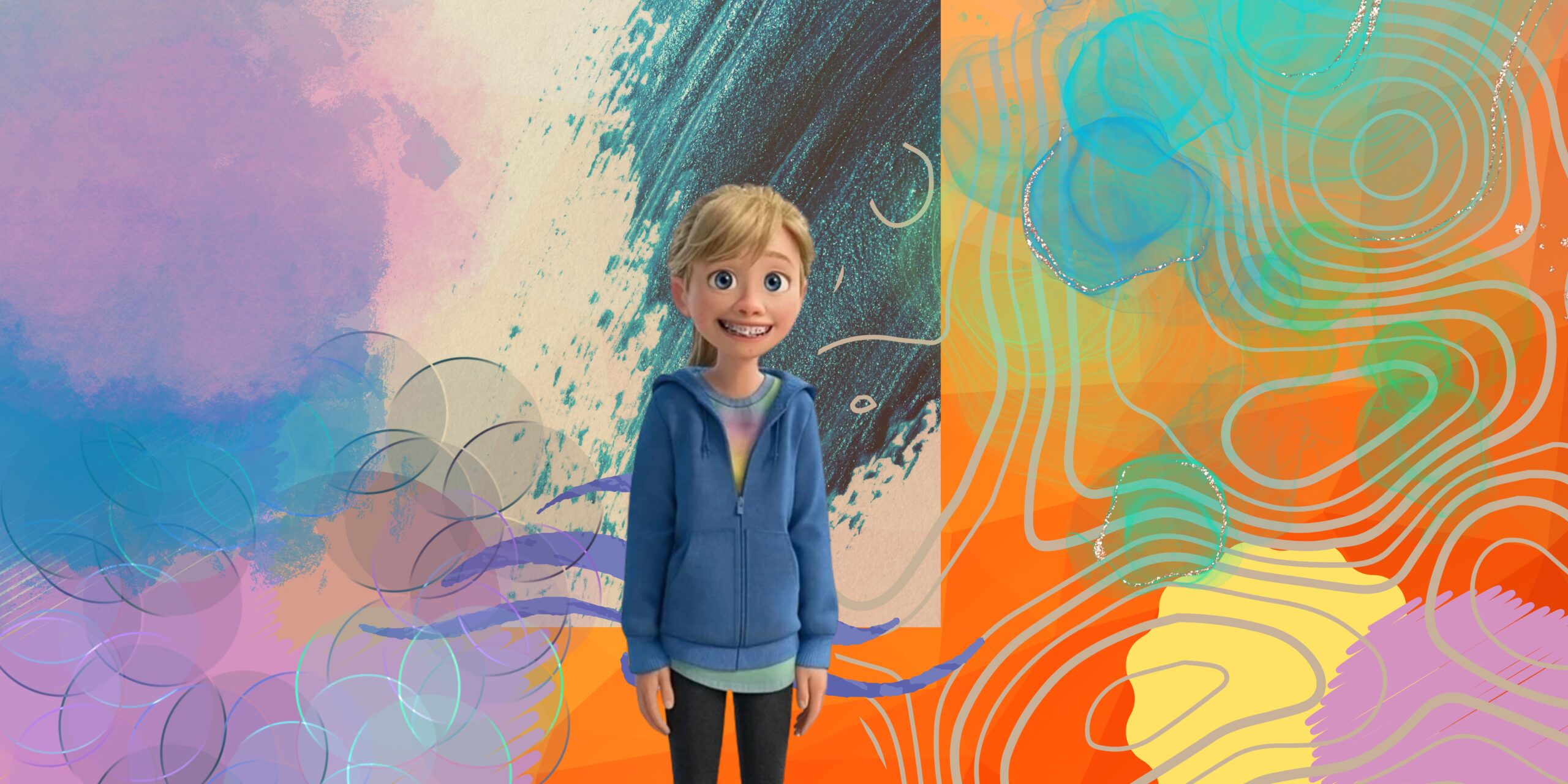Written by Najwa Bashir
Recently an animated movie named “Inside Out 2” came out and it is all over the internet. From Instagram posts and reels to google YouTube and Google, people are talking about it everywhere. The kids laughed at the intense scenes of the movie
But the adults are seen to be crying at the same scenes!
This is the case especially in the scene where Anxiety seems to have lost control over the situation and Riley gets a panic attack.
Many adults have shared how they could relate to Riley in different situations. However, many scenes in the movie makes us ponder if Riley’s anxiety was justifiable? This article therefore attempts to explain this question by analyzing the movie from the perspective of anxiety.
However, before that, let’s understand what anxiety is.
Anxiety
According to the American Psychological Association (APA), anxiety is a feeling that is marked by stress, worrying thoughts, and changes in the body like higher blood pressure.
Fear and anxiety are not the same thing, but people often use both terms interchangeably. People think of anxiety as a long-lasting, future-focused response to a vague threat, while fear is seen as a useful, present-focused, short-lived reaction to a clear and specific danger (American Psychological Association, 2024).
Feelings of danger, whether they are real or imagined, can cause anxiety. It can cause changes in how you think, feel, and act. When we are in or think we are in danger, our brains release adrenaline, a hormone and chemical messenger that sets off these fear reactions.
This is called the fight-or-flight response. This reaction might happen to some people in tough social situations or when they are thinking about big decisions or events (Felman & Browne,2018).
How Riley’s Anxiety Attempted to Protect Her
First off, anxiety makes Riley make a new friend as soon as she drops off at the college for hockey camp.
This was done in order to prevent the situation where Riley would be left lonely as her friends were going to a different high school. When Joy asked Anxiety why he did that, Anxiety explained; “the next three days could determine the next four years of our lives”. This is not just it, Anxiety also showed the possible worst case scenarios where Riley is sitting alone, eating alone and nobody knows her name except for her teachers, she does not fit in the group of other classmates and so on. This shows how Anxiety was trying to prevent uncomfortable circumstances by preparing for the future in advance.
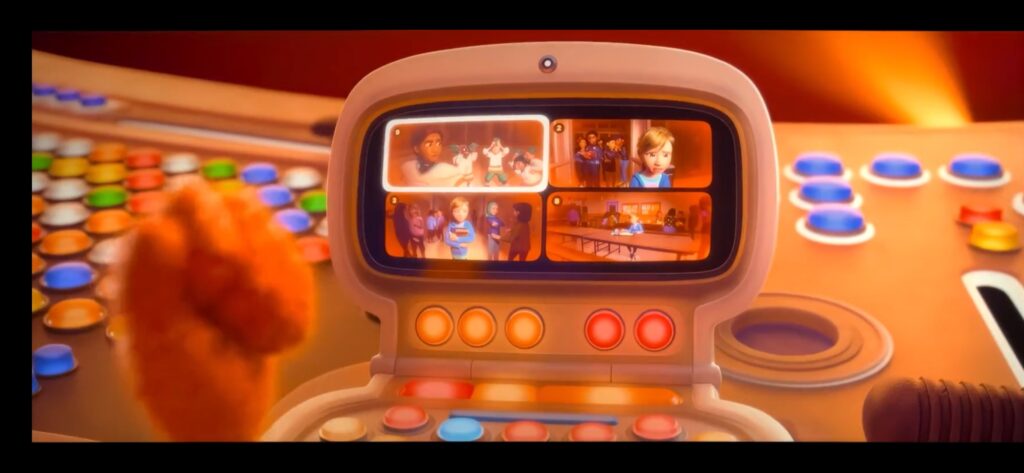
Extent to Which Riley’s Anxiety Affected Her
In order to prevent future adversities, Riley’s Anxiety made her leave her best friends on their own and go to make new friends in the high school.
Riley is seen hanging out with them, joining her new friends’ team and even getting her hair dyed like her new friends to fit in. Moreover, she broke her promise of staying together with her best friends, one of her core beliefs. This shows the extent to which anxiety can affect the individual.
Once Anxiety was done ensuring Riley makes new friends for her high school, he begins to analyze the situation of game. Anxiety wanted to make sure Riley is on the team and the coach has positive opinion about her.
However, he could not know about her coach’s opinion without accessing the diary in which the coach wrote everything.
This increased Riley’s anxiety and she started to experience intense symptoms. She felt restless, excessively worried, irritable, and could not sleep, all of which are the symptoms of anxiety (Felman& Browne, 2018).
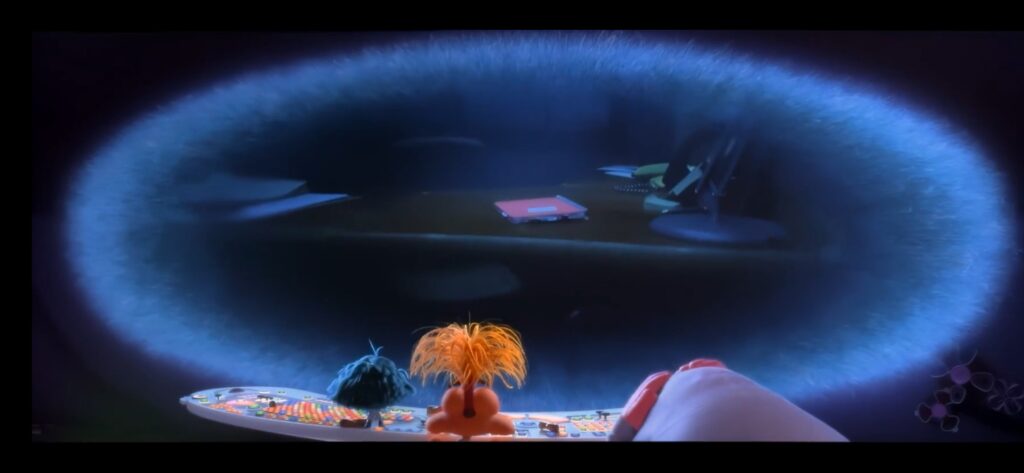
Anxiety made Riley sneak into her coach’s office and steal her diary. She read what her coach wrote about her and Riley got quite uncomfortable after reading that which made her practice even more.
During the match, she could not concentrate and played so harshly that she hit one of her best friends. The lack of concentration is another symptoms of anxiety (Felman& Browne, 2018). Riley was so disturbed and started doubting her worth. She could remember all negative things about her. This is where Anxiety loses control and Riley gets a panic attack.

The Diagnostic and Statistical Manual of Mental Health Disorders (DSM) explains panic attack as a sudden, strong feeling of fear or discomfort that is over in minutes.
A panic attack is marked by four or more of a certain set of physical signs. Among these symptoms are palpitations (a racing or pounding heart), sweating, trembling, or shaking, shortness of breath or suffocating feelings, choking feelings, chest pain or discomfort, nausea or stomach problems, feeling dizzy, unsteady, lightheaded, or faint, chills or heat sensations, derealization (a feeling of not being in reality) or depersonalization (a feeling of being separate from oneself), fear of losing control or “going crazy,” and fear of dying (Cackovic et al., 2023).
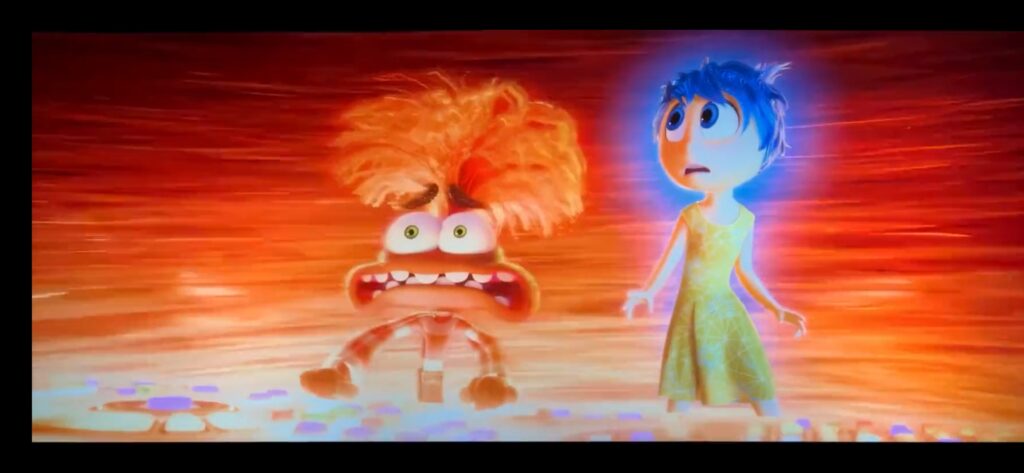
Riley is seen to experience majority of these symptoms. While everything blurs in front of Riley, Anxiety is seem to go crazy and out of control in the headquarters of her mind. He loses control and fails to find any way to get out of the unpleasant situation.
Finally Joy is successful in bringing Anxiety out of the situation and seeing Riley’s condition, which still did not get better, he apologizes.
Anxiety says, “I’m sorry I was just trying to protect her but you are right, we don’t get to choose who Riley is.” This makes her realize, it is not Anxiety’s fault alone, they were all trying to control Riley in one way or the other which way making Riley what she was not. Nevertheless, Riley only got better when all her emotions hugged her and she was allowed to feel each one of them equally.
Is Anxiety’s Behavior Justifiable?
As far as Anxiety’s behavior is concerned, he was just trying to protect her. However, in doing so, he disregarded the need of other emotions in Riley’s life and took the whole situation in his control which just made the situation worse and things began to get off his hands to the extent that Riley got a panic attack.
Anxiety makes Riley modify her feelings to elicit favorable responses from people and adheres to social norms, which exacerbates her anxiety. This is acceptable to a certain extent as Anxiety was trying to protect her from unpleasant future circumstances.
However, keeping Riley’s old emotions away from her was a wrong move. Anxiety must have not done that. Regardless of this, as he said, he was just trying to protect Riley. Despite everything, the other emotions including Joy understood Anxiety and made him understand that certain things are not in Riley’s control and she must not worry about them, rather she should worry and prepare about things that are in her control. This is one way anxiety can be dealt in a positive way. Joy was empathetic enough to understand Anxiety’s perspective and help him do his work but in a better way.
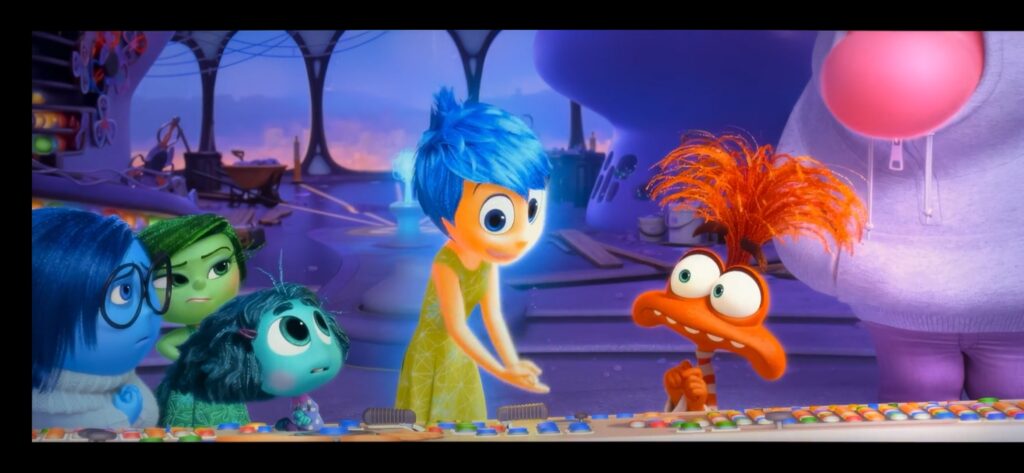
This empathetic behavior is not only exhibited by Joy and other emotions but also Riley’s best friends who forgave her after all she did with them once Riley told them the main reason for her to do that all (her friends were going to a different high school and she did not feel good about it), and Val, her new friend. When people genuinely feel and comprehend what another person is going through, they are more inclined to provide consolation, support, or help. Maintaining and fostering connections in both the personal and professional spheres requires this kind reaction. Riley experiences ups and downs, but everyone around her, including those she tries to impress, shows empathy for her. One such person is Val, who at the same time gives her comfort and causes concern.Val treats Riley gently, consoles her, praises her, and shows her affection despite her uncomfortable and eccentric conduct. All she wants is for Riley to be herself and not live up to the hidden and explicit expectations.
So, Anxiety’s behavior is justifiable although he took some extreme steps (like keeping Riley’s old emotions away from her and taking full control over everything) which he should not have, however, understanding Anxiety’s perspective is also important as he was just doing it to protect Riley.
Conclusion
Similar to feelings of anger or embarrassment, anxiety is a natural emotional spectrum. Anxiety rarely lasts and usually goes away on its own in teens. However, for other youngsters, it either doesn’t go away or is so severe that it prevents them from going about their daily lives. It’s also critical to keep in mind that anxiety among teens isn’t inherently harmful. Teens who experience anxiety are more likely to think critically about their circumstances, which helps keep them safe. It may also inspire people to strive for excellence. Additionally, it can assist students in preparing for difficult circumstances like public speaking or athletic contests. Anxiety is not always bad, but one needs to be able to control it and prevent it from superseding everything before it is too late and things go out of hands.
Inside Out serves as a poignant and imaginative depiction of Riley’s inner thoughts, showing us that, despite the difficulties we face, a sense of safety and belonging can be fostered by acknowledging and accepting our feelings and placing a high value on wholesome connections.
References
- American Psychological Association (2024). Anxiety. Available at: https://www.apa.org/topics/anxiety/
- Cackovic, C., Nazir, S., Marwaha, R. (2023). Panic Disorder. In: StatPearls [Internet]. Treasure Island (FL): StatPearls Publishing; 2024 Jan-. Available from: https://www.ncbi.nlm.nih.gov/books/NBK430973/
- Felman, A., & Browne, D. (2018). What to know about anxiety. Medical News Today. Available at: https://www.medicalnewstoday.com/articles/323454#what-is-anxiety
I am a passionate and knowledgeable psychologist, with a Master of Philosophy (MPhil) in Psychology specializing in Counseling Psychology. Through my writing, I share my insights and thoughts on various psychiatric disorders, conduct analysis on films that touch on psychological issues, and explore other topics related to psychology, while also providing valuable information to psychology enthusiasts, students as well the general community.

